- Life top
- Daily Life
- Applying for LINE stickers
- Exhibition of Matsumoto-sensei
- Hana - Shiba-Inu
- Elec. handicraft & Akihabara
- Supermarkets in the area
- Takaido Civic Center
- Building a house
- Horrible dentists
- Judo therapy
- In an elderly care home
- Parties
- Cosplay bonenkai 2010
- Gainax cosplay bonenkai
- Friends from Gainax
- Friends from schooldays
- Party at Bar Espion
- Home party with cheese
- Music Life
- TARO Quartet
- Maeda-san - violin maker
- Chigusa Kindergarten
- Seniors playing music
- My viola debut
- Torakyo regular concert
- Toranomon Orchestra
- Four seasons
- Shrine visit of the New Year
- New Year´s postcard
- Snowfall in Tokyo
- Hina-matsuri and hina-dolls
- Sakura - cherry-blossom
- Sakura - what I missed most
- Fireworks Festival
- People
- Itakura - his adventurous life
- Naoto - his country life
Supermarkets in the Hamadayama area
In this and the following articles I want to sketch the shopping environment in Hamadayama.


I start with supermarkets. There are at least five supermarkets within a few hundred meters area from my usual walking route from my house to the Hamadayama station: Seiyu, Comodi-Iida, Escamare, Summit and Olympic.
Hamadayama is a relatively young town and its shopping streets (*) is not much developed. Therefore, when I buy ingredients for daily meals, I usually go to one of the nearby supermarkets.
| (*) | In any traditional Japanese town there are well developed shopping streets. I guess at least a few hundred shopping streets exist in Tokyo and form the nucleus of local community life. |
Though there are a number of specialized shops in Hamadayama such as grocery, fishmonger, butcher, liquor shop and coffee dealer and they attract consumers with either high-quality or cheap but non-standard products, supermarkets are more convenient for less critical consumers as they offer much wider spectrum of products at reasonable prices.
Nevertheless, people might think that five supermarkets are too many compared with their area coverage. The number of inhabitants of Hamadayama is 16,059 (as of 22 July 2010) and adding up Narita-nishi (8,757) where I live and Takaido-higashi (17,752) the total number of possible consumers around Hamadayama is 42,568. In average each supermarket has some 8,000 inhabitants as clients and their competitors are not only in the neighborhood. Many Hamadayama inhabitants can easily go to Shibuya, Shinjuku or Kichijoji for shopping.
I am not personally informed about their sales strategy. But, I believe that they try to distinguish them from other shops. The majority tries to attract customers with low price, while others target a niche market.
Seiyu Hamadayama
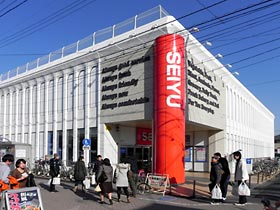
Seiyu Hamadayama
Seiyu Hamadayama is the supermarket I frequent most. The reason is simple. It is located directly on my way to the Hamadayama station and in the mid of a small shopping district. Seiyu boasts as the cheapest shop in the area; “if other shops offer lower prices, we offer you the same price upon your reporting” is the slogan hanging in the shop. The quality of fresh food, in particular vegetable, is satisfactory. The in-store bakery “Mont-Thabor Azabu-Juban” offers bread with good quality. In addition to the food section Seiyu Hamadayama has upstairs a section for household articles. It used to have another building and sell DIY articles, but it closed a few years ago.
Seiyu was originally established as supermarket section of Seibu Railway and Department group in 1956. After the division of the group into two, Seiyu an important part of Saison Group and one of the largest nationwide supermarket chains in Japan. However, the Saison Group failed in the management in the post-bubble-economy period and the stocks of Seiyu were gradually sold to Wal-Mart till Seiyu became 100% subsidiary of Wal-Mart in 2005.
I hear that Wal-Mart tried to tailor Seiyu to its American style management, but changed its policy to adapt more to the Japanese environment. I as a consumer do not feel any difference in Seiyu Hamadayama except that it recently introduced more space intensive sales shelves.
Summit Takaido-higashi
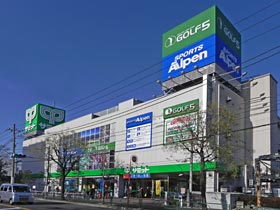
Summit Takaido-higashi
Except for Seiyu Hamadayama, other supermarkets belong to the groups which operate only within Kanto region.
Among them Summit is a subsidiary of Sumitomo Corporation in other word by a big capital. The name “Summit” is derived from the first four letters of “Sumitomo”. The headquarters of Summit is located in the neighborhood Hamadayama and opened its first shop in 1963. Summit operates in Tokyo, Saitama, Kanagawa and Chiba prefectures. Summit Takaido-higashi is relatively spacious but I do not see much characteristics. Maybe it is a bit handicapped to Seiyu because it is remote from any railway station.
Olympic Takaido-higashi
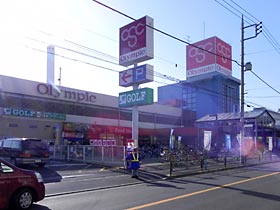
Olympic Takaido-higashi
The largest supermarket in the Hamadayama area is Olympic Takaido-higashi. The Olympic group opened its first shop in 1962 and operates now in the same four Kanto prefectures as Summit. However, it is the latest comer in the Hamadayama area and Olympic Takaido-higasi opened in 1997. Olympic Takaido-higasi has not only food section but also a section for household articles with wide variety of items and a so-called Home-center selling plants and flowers and related gardening articles. There is a special section for bicycle.
As it has a large space, it has a large pallet of products, though the price level is relatively high. I appreciate in particular its fish section. I can usually expect good and fresh fishes and fish specialists cut them according to the request from customers.
Comodi-Iida Hamadayama
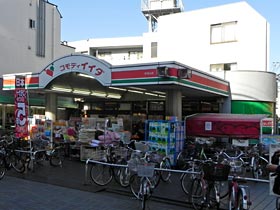
Comodi-Iida Hamadayama
Comodi-Iida is, I think, the most domestically oriented supermarket in the Hamadayama area. Display is not sophisticated and vegetables might be partly spoiled. However, Comodi-Iida offers cheap products. I appreciate their efforts to find economical items: I prefer their bacon for example.
Comodi-Iida group started its business as a grocery in 1919. It adopted the present company name Comodi-Iida in 1997. Comdi-Iida has its shops in four Kanto prefecture, but different from Summit and Olympic, it has shops in Tokyo, Saitama, Chiba and Ibaraki instead of Kanagawa. Comodi-Iida Hamadayama opened in 1985.
Escamare Hamadayama
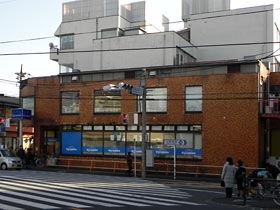
Escamare Hamadayama
The origin of Escamare was a shop selling cooked beans and other daily food which opened in 1907 in Asakusa. There are only two shops of Escamare and the first one in Hamadayama opened in 1986.
Not only is the size of the chain, but also the philosophy of Escamare different from others. Escamare is not satisfied with merely selling organic foods but is determined to supply its customers with only delicious and safe food. Therefore the price of Escamare is in general substantially higher than that of other ordinary supermarkets, but it has loyal customers as Hamadayama is a residential area where there are many demanding consumers who can afford luxury goods, though I am not one of them ;-)
A-Price Takaido
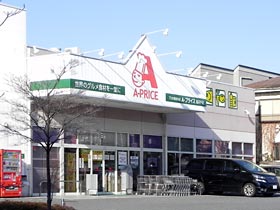
A-Price Takaido
There is another supermarket specialized in food stuff not far from my house. A-Price sells foodstuffs made for professional use. It does not sell much of fresh but price worthy ingredients and in bigger portion. If we take butter as an example, usual supermarkets sell consumer size half pound butter (exactly speaking nowadays as much as 200g). On the other hand A-Price sells only one pound butter, but its price is volumewise more than 20% cheaper. Apart from that I am happy with its wine list. Wine is not yet so popular in Japan and we can buy only very cheap and non-tasty wine in other supermarkets in this area - maybe connoisseur buy their wines in specialty shops in the busier areas of Tokyo - but A-Price offers wines with satisfactory quality at reasonable prices between 1,000 yen and 2,000 yen.
Supermarket started its history in Japan in 1953. The first supermarket was Kinokuniya in Aoyama and its scope of items and self-service style appeared very modern at the time. Low-priced supermarkets became popular, so far as I remember, around 1980. Nowadays, our consumer life is heavily dependent on supermarkets. As I explained in this article, there are five (or six) supermarkets in the Hamadayama area.
There was a rumor about a year ago that another supermarket would open on the vacant land of the former DIY section of Seiyu. However, nothing has happened and the vast land remains vacant till now. A well informed lady told me that the project failed due to the high rent, because Mr. X - big landowner - pursues to utilize his estate to the maximum extent possible and is not ready to offer the rent acceptable to ordinary entrepreneurs. I am not sure whether I should complain to him, because his policy obviously hinders the excessive development and consequently creates a comfortable and idyllic atmosphere of Hamadayama.
;-)
In another article I try to explain about privately-owned shops in Hamadayama.